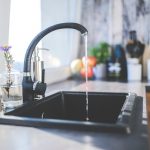Myths about Soft Water
Arizona, the hard water capitol
Arizona has hard water; that’s a given. But once you accept that fact, you have to decide what to do about the water at your house.
Here are the basics: The U.S. Department of the Interior defines water as being slightly hard when it has from 1 to 3.5 grains per gallon of calcium and magnesium bicarbonates occurring naturally in the water. In Arizona, hardness levels can exceed 20 grains per gallon, but these levels are not dangerous. After all, about 80 percent of the water in the United States is considered hard.
What homeowners don’t like is that these minerals can cause the scale to build up inside plumbing and appliances. The useful life of a dishwasher and a water heater can be shortened as a result. The harder the water, the grayer the “whites” look when you do laundry.
Some of us don’t like the taste of the water either. You can use carbon filtration to improve the taste. But a reverse-osmosis system or distillation unit can do even more to clarify your water by combining carbon filtration with the removal of dissolved solids or what some people call “floaties.”
When it comes to the hardness of the water, however, we recommend buying or renting a water-softening system to handle the issue. That’s the only way to end or minimize scale on shower walls as well as the mineral build-up in appliances and water heater. In the process, you can eliminate dry-skin problems and cut back on the use of soaps, detergents, shampoos and fabric softeners.
If you’re doing your homework before you buy or rent, you’re likely to hear many myths about what water treatment does and doesn’t do, according to David Perry, executive director of the Arizona Water Quality Association, a non-profit trade organization. Here are some claims you should discount:
Myth #1
By removing dissolved solids from the water you will deprive your body of healthy nutrients like calcium and magnesium, prevalent in hard water. The problem with that argument is that the calcium and magnesium in your water are in an inorganic form that your body cannot digest in the way that it can the minerals in your food or dietary supplements.
Myth #2
Softened water leaves a film on your skin because something has been added to your water. It’s true that your skin will feel softer and less dry after a shower in softened water because your natural body-moisturizing oils are better able to reach your skin’s surface. In addition, those soaps, shampoos and shower gels will suds up faster. After your shower in soft water, you are actually much cleaner than when you shower in hard water.
Myth #3
Drinking water purified in a reverse-osmosis system or in a distiller will leach essential minerals from your body. This old and untrue story can be found all over the Internet. Nothing is purged from your body by drinking filtered or distilled water, according to Perry. The EPA actually advocates the use of reverse osmosis to remove some substances from drinking water. Generally, you should also avoid any company that uses scare tactics regarding the safety of your municipal drinking-water supply.
Myth #4
Softeners add extra salt to your water. That is not really happening because the softening process is an ion-exchange system that removes the salts holding the calcium and magnesium and replaces them with other salts. You’re not really adding to the total salt level in your water. By comparison, an 8-ounce glass of Coca-Cola has 30 milligrams of sodium while an 8-ounce glass of softened water has less than 12.5 milligrams. According to the Centers for Disease Control, a typical 1-ounce slice of bread has between 80 and 230 milligrams of salt, depending on the brand.
Myth #5
Water from a reverse osmosis system or a distiller will be acidic. RO/distilled water does have a lower pH level. That’s because these systems remove dissolved bicarbonate solids but not acid-producing carbon dioxide. Without the bicarbonates to neutralize it, there is carbonic acid in the RO water. But it is not a health concern, nor will it endanger your water pipes. Although the pH level of untreated tap water will be about 7; the level of RO water is about 6. Soft drinks and sports drinks typically have a pH of 2.5; orange juice is at 3 pH; and coffee is at 4 pH. We drink all these beverages all the time without major problems
Tip:
Before hiring a water-treatment contractor, be sure the contractor is licensed, bonded and insured. Does the contractor use trained and qualified technicians for installation and follow-up? Did he or she test your water before making a recommendation, even if you are on a municipal water source? Do you understand the cost of ongoing maintenance and upkeep?
